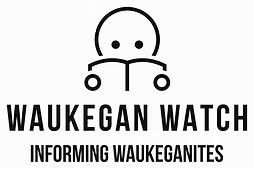You’ve typed “PLG Supplies” into a search bar, haven’t you?
And now you’re here, probably staring at a jumble of conflicting results. One page is selling industrial-grade gloves. Another is talking about a revolutionary software growth model. A third is diving deep into supply chain logistics. It’s enough to make anyone’s head spin.
What gives? Is the internet just broken?
Well, no. The truth is, “PLG” is one of those chameleon-like acronyms that changes its meaning entirely based on who’s using it and in what context. It’s a classic case of business jargon overlap. For a contractor, it means the pipes and fixtures they need to finish a job. For a tech CEO, it’s the secret sauce behind their viral user growth.
So, let’s clear the fog. This isn’t just a definition list. Consider this your field guide to the world of PLG Supplies. We’re going to break down all the major players, from the warehouse shelves to the cloud-based platforms, so you can finally understand which “PLG” is the one you’re actually looking for.
First Things First: What Does PLG Actually Stand For?
Honestly, this is the core of the confusion. PLG isn’t a universal standard like “USB” or “PDF.” It’s a handy set of initials that several different industries have latched onto for their own purposes.
In a nutshell, PLG can mean:
- A Specific B2B Supplier: PLG Supplies Ltd., a US-based distributor.
- A Product Category: Plumbing, Lighting, and General supplies.
- A Logistics Framework: Powerful Logistics Grid.
- A Business Strategy: Product-Led Growth.
It’s a bit like the word “java.” To a programmer, it’s a language. To a coffee lover, it’s a dark roast. Context is absolutely everything.
Let’s dig into each one.
1. PLG Supplies Ltd.: The B2B Workhorse
If you’re in procurement, facilities management, or run any kind of business that needs a steady stream of stuff, this might be your PLG.
What it is: PLG Supplies Ltd. is a US-based wholesale distributor. Think of them as a massive, centralized cupboard for businesses. They’ve built their model on being a one-stop-shop for a dizzying array of essentials.
What They Offer: Their catalog is… extensive. We’re talking:
- Industrial & Janitorial: Safety gear, cleaning chemicals, floor mats, tools.
- Office Supplies: The classic pens, paper, and toner, but also furniture and breakroom supplies.
- Medical & Packaging: Everything from disposable gloves to shipping boxes and bubble wrap.
The Bottom Line for You: The value proposition here is consolidation and efficiency. Instead of managing 15 different suppliers for gloves, lightbulbs, and copy paper, a business can streamline its purchasing through a single vendor. That means one invoice, one relationship to manage, and often, better pricing through volume. It’s a play for operational simplicity.
2. Plumbing, Lighting & General (PLG): The Contractor’s Trio
Now, let’s step onto a construction site. Here, “PLG Supplies” takes on a much more literal, physical meaning. This is the domain of builders, electricians, and property managers.
What it is: This isn’t usually a single company name, but a common industry shorthand for a category of goods. Distributors that cater to the trades will often group these items together because, frankly, that’s what their customers are always buying together.
What’s Included:
- Plumbing (P): Pipes, fittings, valves, sinks, toilets, faucets.
- Lighting (L): Fixtures, bulbs, lamps, switches, wiring.
- General (G): This is the catch-all—tools, fasteners, hardware, and other general construction supplies.
Why This Grouping Matters: For a contractor renovating a bathroom, they need all three. They need the P (toilet, pipes), the L (vanity light, exhaust fan), and the G (screws, caulk, wrench). A supplier that bundles these is providing a crucial service: saving the contractor time and multiple trips. It’s all about being a single source for a complete project.
3. Powerful Logistics Grid (PLG): The Brains Behind the Operation
This is where we shift from physical products to the system that moves them. If the first two PLGs are the actors, the Powerful Logistics Grid is the stage manager, director, and lighting crew all in one.
What it is: A Powerful Logistics Grid is a modern, tech-driven approach to supply chain management. It’s not a company you buy from, but a capability that a logistics provider might offer. It integrates sourcing, warehouse management, and last-mile delivery into a single, intelligent network.
How it Works (In Plain English): Imagine you have inventory in three different warehouses across the country. An old-school system might have you checking each location manually. A PLG, however, gives you a single dashboard showing everything in real-time. When an order comes in, its algorithms automatically decide:
- Which warehouse is closest to the customer?
- Which has the item in stock?
- What is the most cost-effective and fastest shipping route?
It’s the kind of seamless, data-powered backbone that makes next-day or even same-day delivery possible. It’s the invisible engine of modern commerce.
4. Product-Led Growth (PLG): The Strategy That’s Eating the World
Alright, take a hard left turn. This PLG has nothing to do with physical supplies and everything to do with how modern software companies are built. If you’re in the tech space, this is the PLG that gets all the buzz.
What it is: Product-Led Growth is a business methodology where the product itself is the main engine for customer acquisition, conversion, and expansion. Instead of relying on a massive sales team to make cold calls, the product is so good and so easy to try that it markets itself.
How it Works: You’ve experienced this, even if you didn’t know it. Think about Slack, Dropbox, or Calendly.
- Acquisition: A friend sends you a link to join their Slack workspace or schedule a meeting via Calendly. The product itself facilitates the invite.
- Conversion: You start using the free version (freemium) and love it. You hit a limitation (like storage space or a premium feature) and happily pay to upgrade. The value is proven before money ever changes hands.
- Expansion: As your team grows, you naturally add more seats to your plan. The product’s utility drives the upsell.
The product isn’t just what you sell; it’s your most effective salesperson.
PLG Supplies: A Side-by-Side Comparison
Still feeling a bit tangled? This table should help crystallize the differences.
| Feature | PLG Supplies Ltd. (B2B Supplier) | Plumbing, Lighting, General | Powerful Logistics Grid | Product-Led Growth |
| Primary Domain | B2B Distribution & Procurement | Construction & Trades | Supply Chain & Logistics | SaaS & Tech Businesses |
| What It Is | A specific company | A category of products | An operational framework | A business strategy |
| Core Focus | Selling physical goods | Selling physical goods | Moving physical goods efficiently | Acquiring users via software |
| End Customer | Businesses of all types | Contractors, Builders | Businesses with complex logistics | Individual users & teams |
So, Which PLG Supplies Is Right For You?
This is the million-dollar question, and the answer is entirely situational. Let’s make it simple.
- You are a business buyer looking to consolidate your vendors for office, industrial, or medical supplies. Your search should be focused on PLG Supplies Ltd. or similar B2B distributors. Your goal is cost-saving and operational efficiency.
- You are a contractor, electrician, or property manager needing materials for a job. You’re looking for distributors that specialize in Plumbing, Lighting, and General supplies. Your goal is finding a reliable one-stop-shop for project essentials.
- You are a business owner struggling with inventory management and shipping delays. You need to be looking for logistics partners that offer a Powerful Logistics Grid-type integrated system. Your goal is supply chain visibility and optimization.
- You are a startup founder or marketer in the tech space trying to scale user growth. You need to study and implement Product-Led Growth principles. Your goal is to build a product so valuable that it sells itself.
See? Once you apply the context, the path becomes clear.
FAQs
Q1: Is PLG Supplies Ltd. the same as a company that sells plumbing supplies?
Not necessarily. While PLG Supplies Ltd. might sell some plumbing items as part of its broad catalog, it is not specifically a plumbing supplier. A company specializing in plumbing, lighting, and general supplies would have a much deeper and more specialized inventory for the trades.
Q2: Can a company use both a Powerful Logistics Grid and a Product-Led Growth strategy?
Absolutely, and the most sophisticated companies do. A tech company with a PLG strategy (like selling physical products online) would rely heavily on a Powerful Logistics Grid to ensure a seamless customer experience from first click to delivery. The PLG strategy drives the demand, and the logistics grid fulfills it flawlessly.
Q3: What’s the biggest misconception about Product-Led Growth?
That it means you don’t need a sales team. That’s a myth. In a PLG model, the sales team’s role shifts from creating demand to managing and accelerating it. They focus on helping large accounts that have already experienced the product’s value, answering complex questions, and negotiating enterprise contracts.
Q4: I’m a small business. Is a Powerful Logistics Grid too advanced for me?
The term sounds intimidating, but the concept is scalable. You don’t need to build a global network. Today, many third-party logistics (3PL) providers offer this kind of integrated, tech-enabled service to businesses of all sizes. The key is looking for partners that give you real-time inventory and shipping visibility, which is the core of the PLG idea.
Q5: How do I find a reliable supplier for plumbing and lighting supplies?
Look for established distributors with strong reputations in your local or regional market. Check reviews from other contractors, assess their inventory depth, and see if they offer services like will-call pickup or jobsite delivery. The best ones make your life easier, not just sell you products.
The Final Word
It’s a funny thing, isn’t it? Four simple letters, four vastly different worlds. From the tangible heft of a pipe wrench to the invisible code of a viral software feature, “PLG Supplies” encapsulates the beautiful complexity of modern business.
The key takeaway? Don’t just search blindly. Pause for a second and define your own context. Are you building something physical? Are you optimizing how you move goods? Or are you building the next big app?
Once you know that, you’ll know exactly which PLG you need. And frankly, that’s half the battle won.
Now, which one brought you here today?

